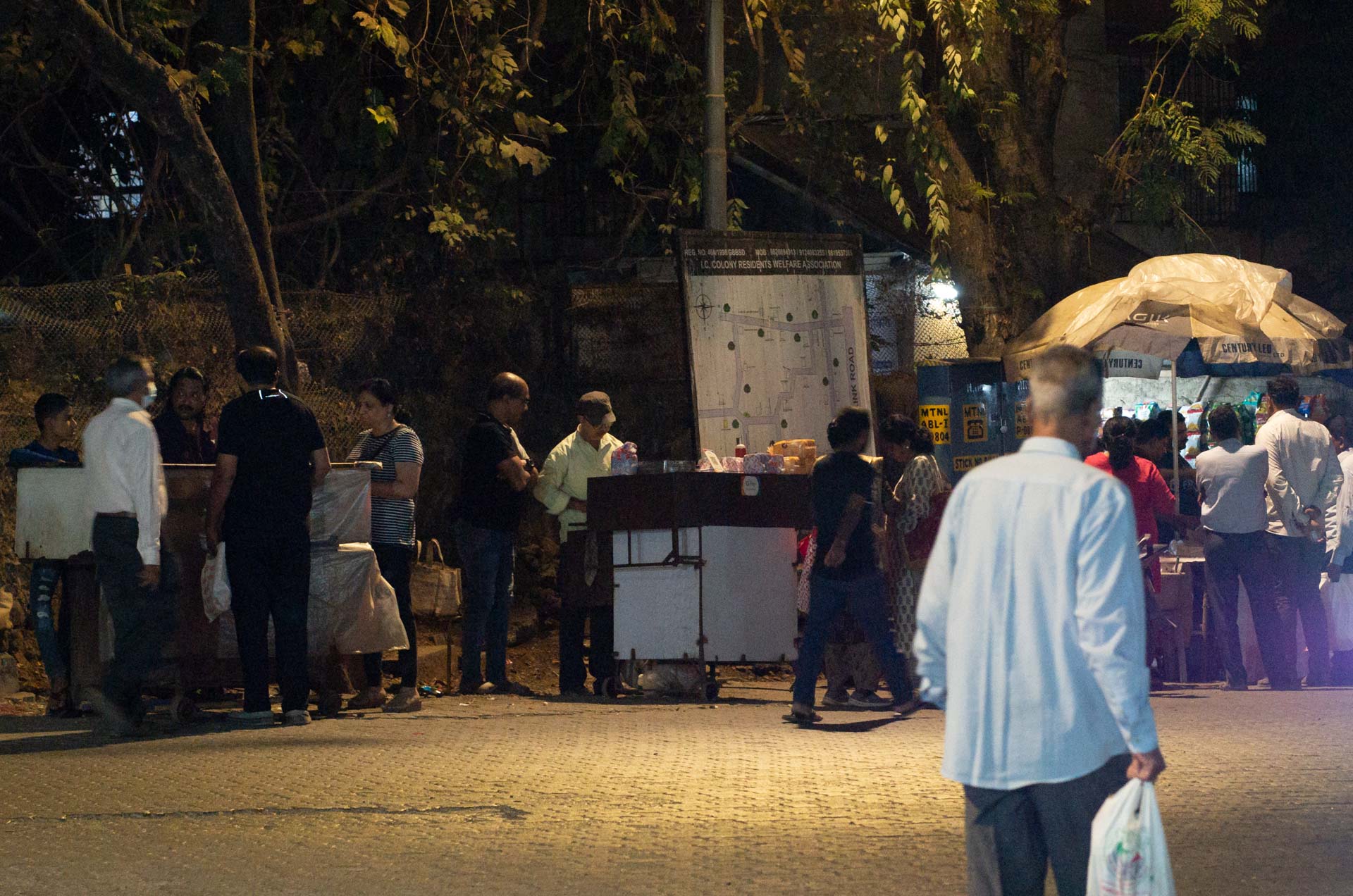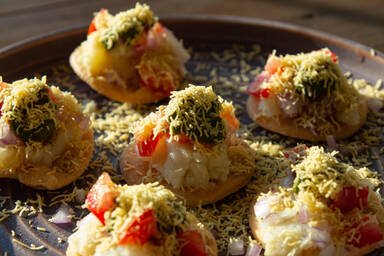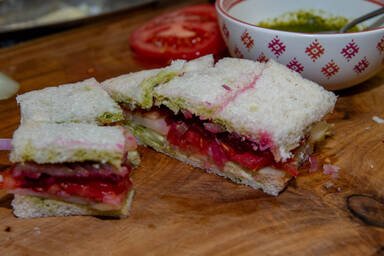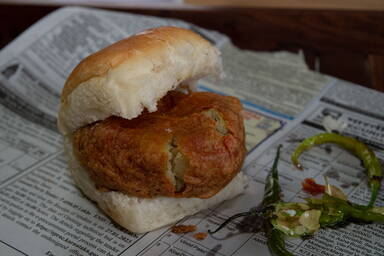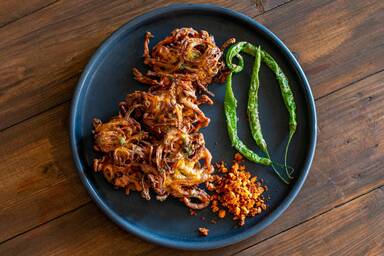Mumbai street food, also known as chaat, is a cuisine by itself. It is distinctively different from the general cuisine of Maharashtra, the Indian state of which Mumbai is the capital. Chaat is extremely popular with locals, but also a highlight for every tourist.
Almost every street corner has them: chaatwalas, the people selling streetfood from their carts or stands. The variety is large and it tastes great! Ranging from pakoras (deep fried vegetables), different types of vegetable patties, (dal vada, batata vada), vegetable sandwiches to the dishes with puris (e.g. sev puri or dahi puri) – small crackers you eat with vegetables, chutneys and other condiments.
On this page I want to give you an overview on what you need as basic ingredients to make your own chaat, links to my chaat recipes and some guidance when you want to eat roadside streetfood in Asia.
Common ingredients in Mumbai street food
Sev: thin vermicelli type noodles made from gram flour. You can buy sev on Amazon (quite a large pack, will last for a while if you store it airtight).
Puris: crackers made from wheat flour, very slightly spice. You can buy puris on Amazon.
Pav: Soft wheat rolls. Amongst other dishes, this is used with pav bhaji and vada pav. When I was still living in Germany, I used to substitute it with Turkish flatbread when eating pav bhaji as pavs are hardly available. I honestly even prefer that! With batata vadas, deep fried potato balls, I guess you can also use any other bread. While the vadas are typically stuffed in the pav, I would only use fresh soft rolls for that, not industrial burger buns. And if you can’t get soft rolls, I’d use any decent white bread on the side. A lot of people also eat the vadas plain without bread.
Fried green chilies: you get those often on the side when eating pakora or any vadas. Chilies loose part of their pungency when fried. See that they get a lighter, whitish color on the outside. This means they’re properly fried. And score them with a knife before frying, otherwise they will explode on you!
Here in Mumbai you get two types of chilies. Really spicy ones (mostly these you’ll find abroad) or milder chilies. While the chaatwalas offer both kinds sometimes, I can eat the spicy and the mild ones. But if given a chance, I’ll pick the milder ones. After frying to mix them with a bit of coarse sea or rock salt and eat them as a whole on the side (not too many though 😉).
Vegetables & pulses: Raw tomatoes, raw onions and boiled potatoes you find in a lot of dishes. Also chickpeas. When I get to a dish using them, I’ll link a recipe for the chickpeas here.
Chutneys: Chaat mostly uses chutneys. The most common chutneys used in street food are green, spicy chutney, sweet chutney with tamarind and dates and dry garlic chutney, here are the recipes.
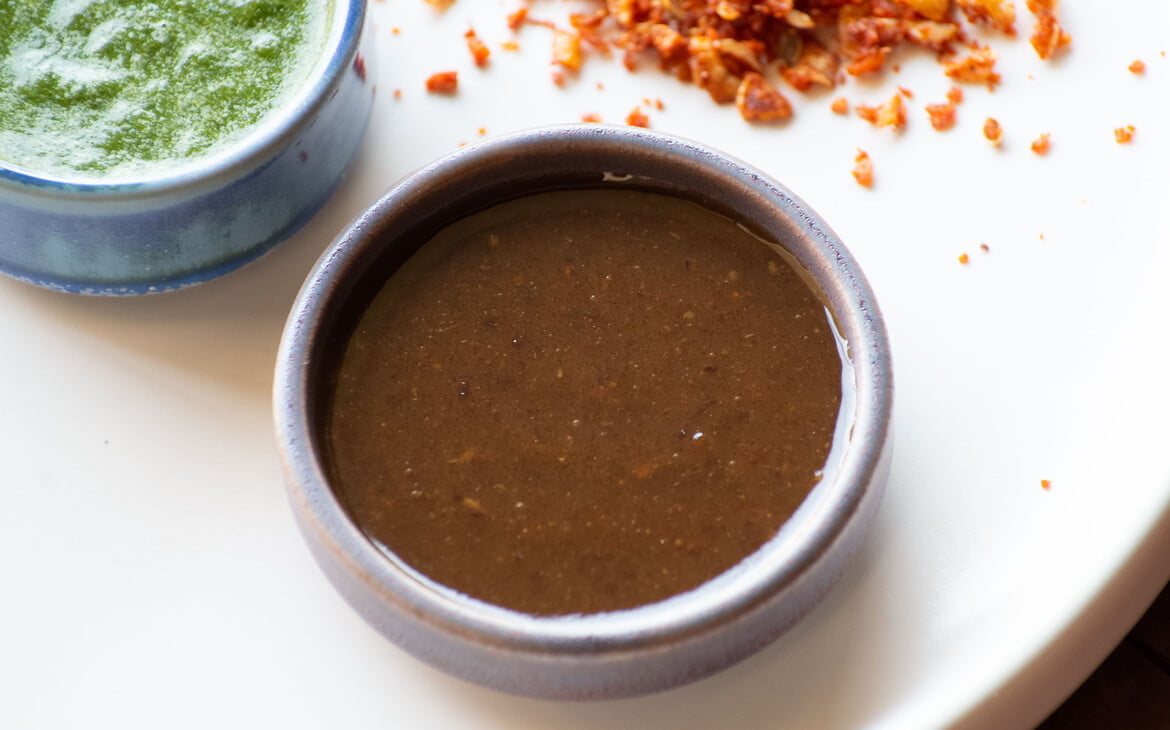
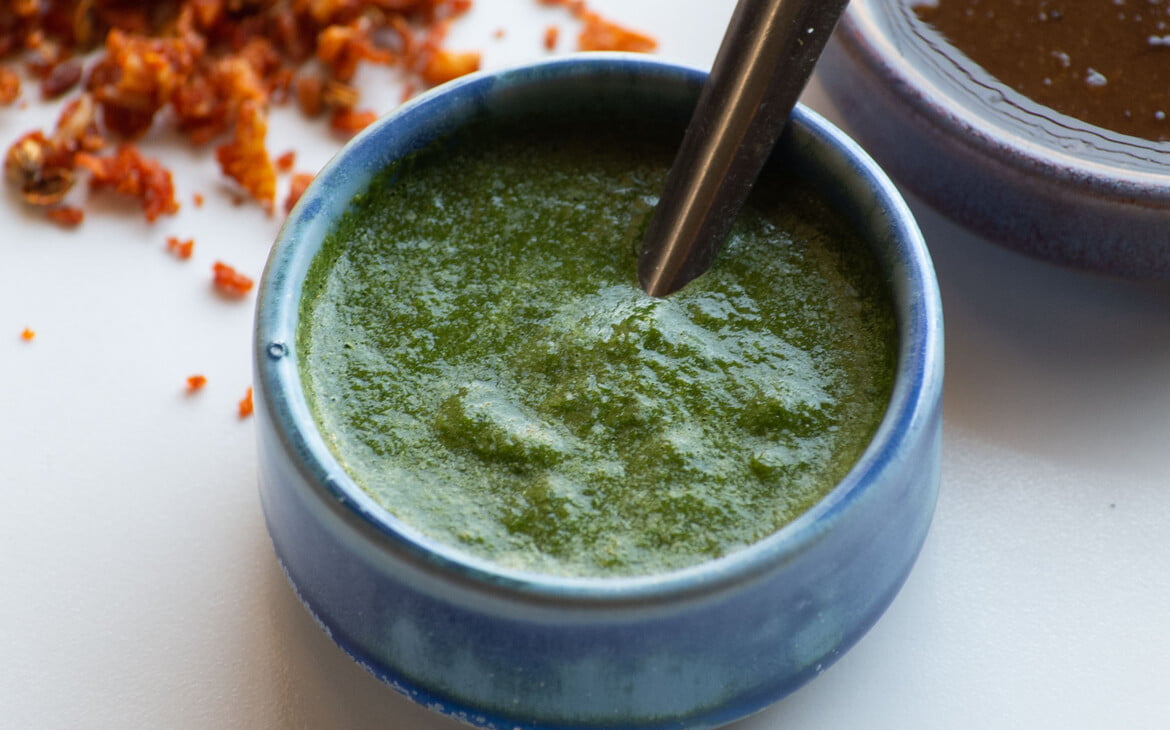
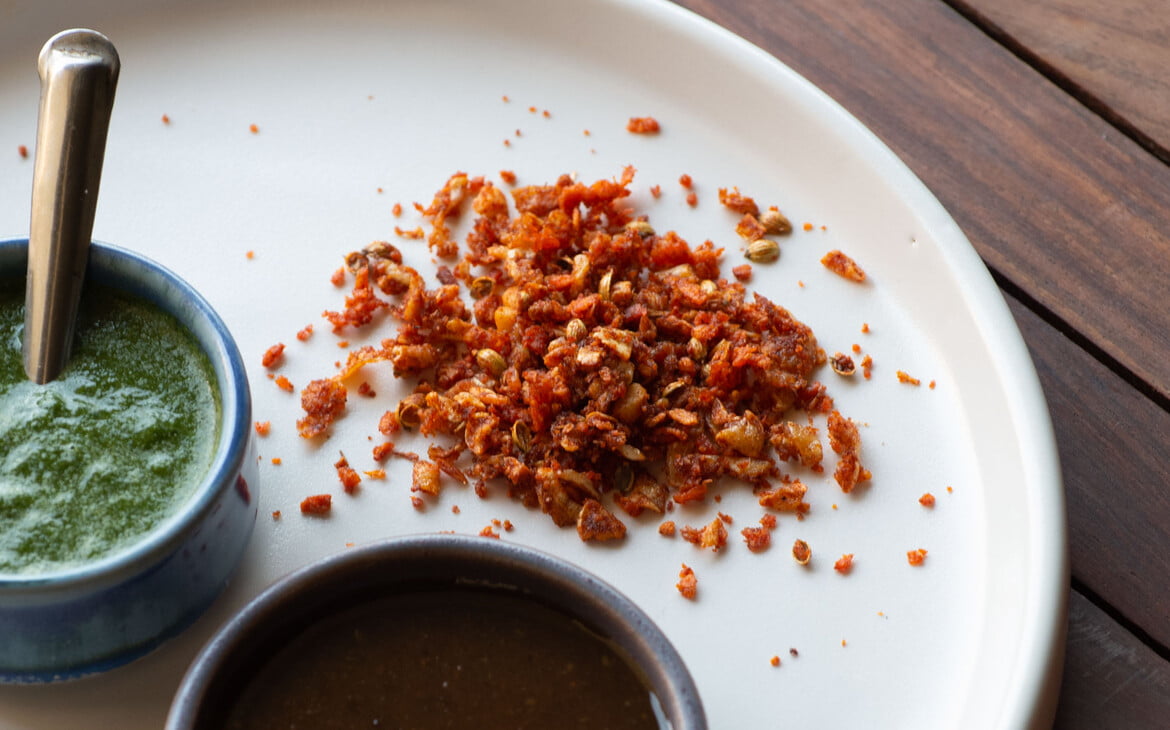
Hygiene of street food in Mumbai
As everywhere else in Asia, you should be a bit careful when it comes to Mumbai streetfood, where you eat it. Trusted chaatwalas are quite important, especially when it comes to ingredients containing water, which may not be clean. Hygiene is an important factor. Of course, you have to see this not with Western standards. Else you will hardly find any place. Ask locals where they go to, friends, coworkers,such as a receptionist of a hotel or a sales person in a store. If you visit Borivali in Northern Mumbai, where I live, or go to Churchgate in South Mumbai, ask me 😊. A general tip for streetfood: eat it from paper plates or a newspaper. Reusable plates are of course more environmental, but the hygiene may suffer. In Mumbai I anyways never have seen reusable plates. And deep fried food is generally safe to eat.
As for drinks on the road, obviously anything canned is fine. Also an absolutely safe and tasty drink: fresh coconut water! If the coconut is opened freshly in front of you that’s no risk at all. Happened to my dad (I think in Myanmar): refilling of coconuts with regular water. I never experienced this myself, I don’t think that’s done in Mumbai. Generally you can say, that roadside vendors are by far more trustworthy in India than (unfortunately) my experiences in South-East Asia. Chai is also safe, as it is boiled. If you’re unsure about the hygiene of the place, opt for the paper cups. Lots of vendors have glass and paper cups.
I also don’t want you to think that street food is something to stay away from! Issues arising from it are not the norm. Generally it is absolutely fine to eat, I want to actually encourage you to try it! It tastes absolutely amazing!

